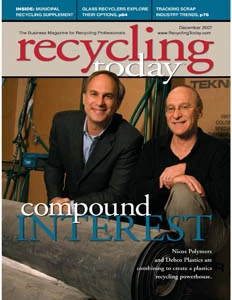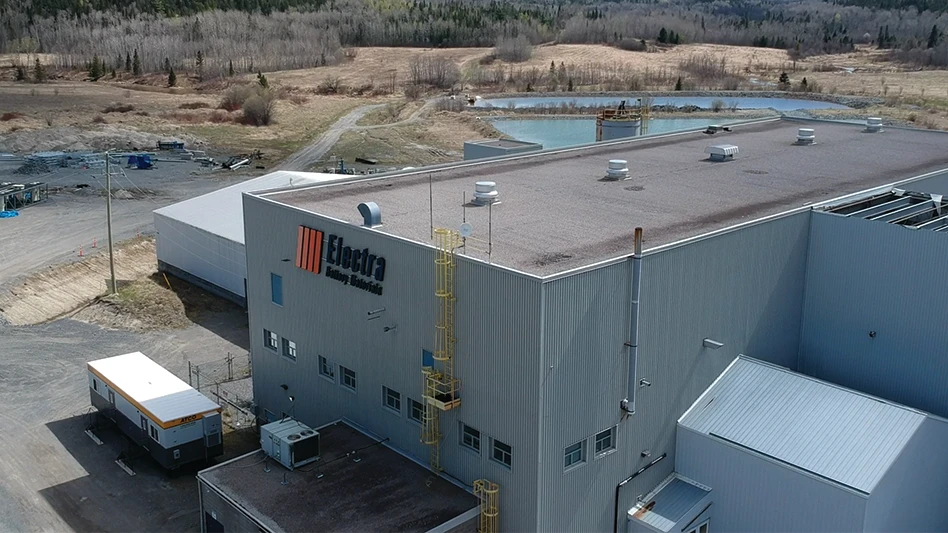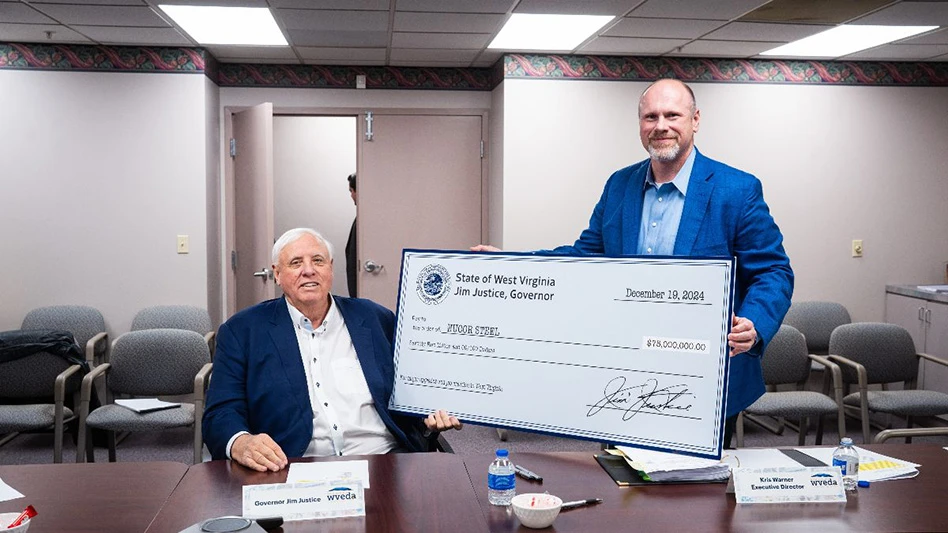For the past several years, North America has been able to help feed the global hunger for ferrous scrap by providing healthy tonnages of the material for both its own steel mills and many overseas.
As 2007 draws to a close, however, there is concern from many scrap dealers that one of the key sources of supply—demolition scrap—that had remained vigorous is beginning to face restrictions.
With scrap dealers already facing shifting and declining manufacturing generation and a decrease in white goods from the housing slowdown, a drop in steel beams and plate pulled from demolition sites will be most unwelcome.
But September construction statistics closed out the third quarter of 2007 with a thud. September contract figures compiled by McGraw-Hill Construction, Bedford, Mass., reveal a 27 percent drop in contract values for infrastructure work (highways, bridges, water projects) compared to the month before. One redeeming factor, however, is that the August figure was a strong one.
Also showing declines are segments of the nonresidential building sector, including manufacturing plant and warehouse construction.
Not all is gloom and doom, as contracts are still being signed for new retail, hotel and office construction, which could help keep demolition scrap heading into yards, pending seasonal slowdowns in the North.
As of mid-November, however, some processors were concerned about generation levels. An Ohio shredder operator reports inventory at bare bones levels, at times prompting him to shut his shredding plant down an hour or two early.
A ferrous scrap buyer with operations in several Midwest states comments that when a manufacturing scrap generator idles a plant in his part of the country, that space may lie dormant for a very long period—or become one-time demolition scrap rather than a source of prompt grades.
On the demolition side, he’s not certain whether generation is decreasing or if the competition for material is becoming so fierce that the flow only appears to have slowed.
The demand for the plate and structural (P&S) grades, according to the Midwest buyer, is significant from mills trying to work the material into their melting mix. "Since the mills are trying to average down their costs, it’s in great demand," he comments. "They’re buying more P&S versus prompt grades. There is now a lot more exporting of P&S," he adds.
Overseas demand is likely to remain a reality, with the International Iron & Steel Institute reporting that through October Chinese steel production continued on its pace to set another annual record. That nation’s mills produced nearly 43 million metric tons of steel in October 2007, a 13.5 percent increase over monthly production one year earlier.
The October trend showed steel production rising in other Asian nations (such as Japan, South Korea and India), while it tapered off throughout most of the European Union (a 2.2 percent decrease throughout the E.U.). Steel production in the United States in October was up both compared to September and compared to the same month last year, with a 5.1 percent production increase recorded compared to October 2006.
The overall balance picture continues to yield high per-ton pricing. Even with a second straight monthly drop for November prices, mills in the United States continue to pay from $250 to more than $300 per ton for ferrous scrap, depending on the grade.
According to data collected for the Raw Material Data Aggregation Service (RMDAS) of Management Science Associates, Pittsburgh, domestic mills paid an average of $306 per ton for prompt industrial composite grades and $277 per ton on average for the No. 2 shredded scrap grade (determined by RMDAS to contain more than .17 percent copper).
MSA/RMDASTM Monthly Ferrous Scrap Price Index
FERROUS PRICING EDGES DOWN
Ferrous scrap pricing declined across all grades in all regions in November. For the second straight month, mill buyers were able to pay slightly less. Prompt industrial composite grades moved down the most, losing an average of from $12 to $18 per ton in value compared to the month before.
Reported regional aggregated spot market prices per gross ton shown for each commodity are based on all Management Science Associates’ (MSA) Raw Material Data Aggregation Service (RMDAS) participants’ actual order data submitted to and processed by MSA as of the 20th of each respective "buy month," rounded to the whole integer. A map of RMDAS regions is available at http://rmdas.msa.com, as is a further explanation of RMDAS methodology and an accompanying disclaimer.
No. 2 shredded scrap is defined as containing .17 percent or greater copper content. The prompt industrial composite consists of an average of No. 1 bundles and No. 1 busheling. Additional pricing information on each grade can be found online at www.Recycling
Today.com.
© 2007 Management Science Associates Inc. All rights reserved RMDAS is a trademark of Management Science Associates Inc.
SeverCorr Begins Production at Mississippi Steel MillRussia-based SeverStal has announced that its SeverCorr operation, which it owns in partnership with a U.S.-based group, has started production at its steel mill near Columbus, Miss. The electric arc furnace operation is designed to make high-quality steel using scrap metal.
SeverCorr complements SeverStal’s other U.S. business, SNA, which services manufacturing plants in the Midwest from its Dearborn, Mich., location.
The Mississippi plant is capable of producing up to 1.5 million tons of steel per year. Severstal has invested a total of $880 million in the mill. The mini-mill’s products are intended for use in the automobile, construction, agrarian, pipe-making and machine-building sectors.
Steelmakers Eye OhioTwo European-based investment groups are considering building new steel mills in Ohio.
The Russian firm MMK (Magnitogorsk Iron & Steel Works) is considering a site in southern Ohio for an electric arc furnace (EAF) mill. Speculation also has surfaced that MMK may instead bid for Middletown, Ohio-based AK Steel.
At the same time MMK ponders its options, a Cleveland-based investment group that is working in cooperation with European steel industry veterans is also exploring locations in the Buckeye State for an EAF mill.
According to a report in the Columbus Dispatch, Global Principal Partners is a Cleveland-based investment group representing "steel industry managers primarily from Europe." Ohio is not necessarily the sole target location, as the group "is considering several Midwestern states and one in the South," according to the news report.
The proposed EAF mill would cost $1.2 billion to build and would employ about 500 people, according to the spokesperson for Global Principal Partners quoted in the Dispatch.
The investment group is focusing on selecting a site by the end of the first quarter of 2008.
The MMK project, first announced in September, also caries a $1 billion price tag, according to news reports. The Russian firm is further along in its plans, having filed environmental permit applications for one location in southern Ohio as well as another one in Quebec.
Reports began surfacing in American Metal Market and other publications in late October that rather than build at a greenfield site in Ohio, MMK may make a bid for AK Steel, which has mills in Ohio and bordering states. MMK has denied those rumors.

Explore the December 2007 Issue
Check out more from this issue and find your next story to read.
Latest from Recycling Today
- Sortera Technologies ‘owning and operating’ aluminum sorting solutions
- IDTechEx sees electric-powered construction equipment growth
- Global steel output recedes in November
- Fitch Ratings sees reasons for steel optimism in 2025
- P+PB adds new board members
- BlueScope, BHP & Rio Tinto select site for electric smelting furnace pilot plant
- Magnomer joins Canada Plastics Pact
- Out of touch with reality





